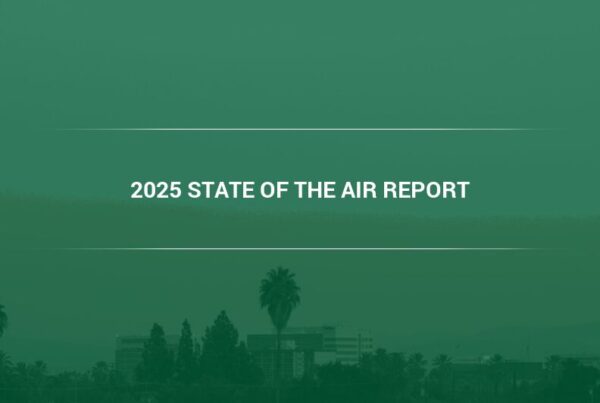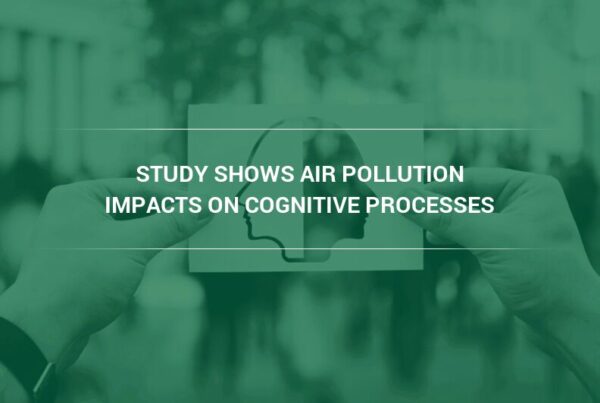The various paints and chemical cleaners used by auto body workshops can do damage to people’s health and the environment. It is important to limit the emissions of air pollutants from auto body workshops for the benefit of society. How can air pollution from auto body workshops be reduced, limiting the damage done by emissions?
Air Pollutants Released by Auto Body Workshops
Auto body workshops can discharge a variety of harmful emissions into the air, water, and the land itself. These emissions can damage both the environment and people’s health through contamination by toxic materials. Air pollutants released by auto body workshops can include volatile organic compounds, heavy metals, and diisocyanates.
“Auto body workshops employ a large number of cleaners, paints, and paint servers which can all release volatile organic compounds. Volatile organic compounds (VOCs) are organic, carbon-based compounds which easily turn into gases or vapors,” says Charlie Seyffer, Manager of Marketing & Technical Materials at Camfil USA Air Filtration. “These compounds are hazardous because they usually contain other elements like chlorine, bromine, sulfur, or nitrogen that can interact with other chemicals in the environment and become toxic.”
Heavy metals like lead, cadmium, and chromium are metals that can be released into the air in the form of particulate pollution from welding and sanding. These metals are typically found in vehicle paint, and can easily be disturbed when the car is being detailed. (1)
Diisocyanates are extremely toxic air pollutants that are released during the painting of vehicles. These industrial chemicals are commonly used as hardening agents to harden vehicle paint after it is applied, reducing the amount of cure time needed.
Effects of Air Pollution from Auto Body Workshops
The effects of air pollution from auto body workshops include damage to the eyes, nose, and throat, contributing to conditions like asthma. The pollutants can also damage the environment, contributing to global climate change.
“Limited exposure to volatile organic compounds can irritate the eyes, nose, and throat. Repeated exposure to VOCs can cause damage to the kidney, liver and nervous system, and can even increase a person’s chance of developing cancer,” says Camfil’s Seyffer. (2)
The effects of exposure to lead and other heavy metals are cumulative, and can impact almost every system in the body. Lead can distribute itself to the brain, liver, bones and kidneys, damaging all of those systems over time. Children are especially vulnerable to lead exposure due to the fact that their bodies are still developing. There is no known safe level of lead exposure, so it is important to protect people from lead exposure whenever possible.
Exposure to chromium and cadmium can damage the mucous membrane, and high levels of exposure have been correlated with the development of lung cancer. Chromium exposure is a likely contributor to asthma, and cadmium exposure can lead to kidney disease, much like lead exposure.
“The health effects of exposure to diisocyanatesdepend on length and intensity of exposure,” says Seyffer at Camfil. “Diisocyanate exposure often causes respiratory effects, including decreased overall lung function. Diisocyanates can also cause asthma, especially in those who are particularly sensitive to diisocyanates.” (3)
Volatile organic compounds not only impact people’s health, they also harm the environment. VOCs react in the presence of heat and sunlight to create smog or ground level ozone. Smog has been linked to a number of respiratory health effects, including asthma and lung irritation, but it also contributes to global climate change. Smog traps heat in, contributing to the greenhouse effect. Smog also contributes to acid rain and ocean acidification.
Limiting Air Pollutants from Auto Body Workshops
Limiting air pollutants from auto body workshops can be done through a variety of different techniques that control pollution emissions. Auto body workshops should focus on employing smart mixing and painting practices, clean paint guns properly, do surface preparation when sanding and filing, and wash vehicles in a sanitary way.
“Mixing and painting operations are responsible for most of the toxic air emissions released by auto body workshops, so it is of supreme importance to focus on reducing VOCs by painting and mixing in ways that release fewer emissions,” says Seyffer. “Downdraft airflow paint booths can be used to reduce emissions, providing cleaner paint jobs. Booth filters should be changed regularly, and low VOC coatings should be applied with high-efficiency transfer methods.” (4)
Paint guns can release VOCs into the atmosphere and expose auto shop workers to toxic fumes if they are cleaned incorrectly. Paint gun cleaning solutions should fall within a district’s VOC limits, and be applied in an enclosed automatic washing system. Technicians should use the correct gloves and respirators when cleaning paint guns.
Sanding and filing can emit a lot of dust containing hazardous toxic metals from the paints and polyester resins, as well as titanium dioxide released by fillers. The toxic dusts released by surface preparation and sanding can contaminate water used for washing, which will drain into storm drains and sewers. To fight contamination of wash water, methods to control dust while sanding, such as vacuum sanders, should be employed. Sanding waste should not be sent directly to the sewer, rather the solids should be settled and separated before discharging to the sewer.
Vehicles should be washed with attention to the contamination of water by dust, dirt, oil, metals and toxic fluids. Wash water should never be discharged to streets, storm drains, or gutters, as these areas flow to rivers and streams that can harm the environment.
Air pollution from auto body workshops is harmful to the health of auto shop workers and the public at large, so it is necessary to reduce emissions from auto body workshops whenever possible. Auto body shops should limit the release of VOCs, heavy metals and diisocyanates with smart working practices.
Air pollution from auto body workshops can do lasting damage to your health if you work in an auto body shop, so protecting yourself is important. To learn more about the pollutants released by auto body shops and to buy filters for your shop’s HVAC system, contact Camfil today.
SOURCES
- https://nepis.epa.gov/Exe/ZyNET.exe/P100BVZD.TXT?ZyActionD=ZyDocument&Client=EPA&Index=2000+Thru+2005&Docs=&Query=&Time=&EndTime=&SearchMethod=1&TocRestrict=n&Toc=&TocEntry=&QField=&QFieldYear=&QFieldMonth=&QFieldDay=&IntQFieldOp=0&ExtQFieldOp=0&XmlQuery=&File=D%3A%5Czyfiles%5CIndex%20Data%5C00thru05%5CTxt%5C00000028%5CP100BVZD.txt&User=ANONYMOUS&Password=anonymous&SortMethod=h%7C-&MaximumDocuments=1&FuzzyDegree=0&ImageQuality=r75g8/r75g8/x150y150g16/i425&Display=hpfr&DefSeekPage=x&SearchBack=ZyActionL&Back=ZyActionS&BackDesc=Results%20page&MaximumPages=1&ZyEntry=1&SeekPage=x&ZyPURL
- https://www.epa.gov/indoor-air-quality-iaq/volatile-organic-compounds-impact-indoor-air-quality
- https://www.atsdr.cdc.gov/phs/phs.asp?id=1450&tid=245
- http://www.dtsc.ca.gov/PollutionPrevention/ABP/upload/TD_FS_ABP2checklist.pdf



